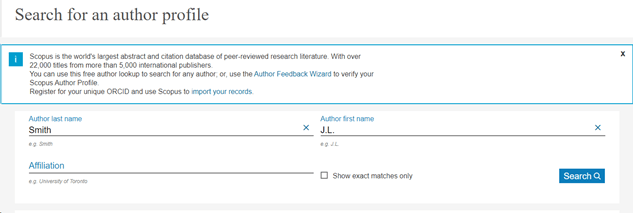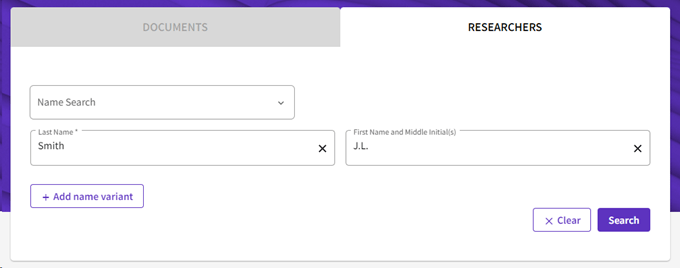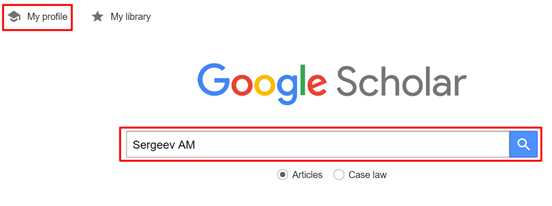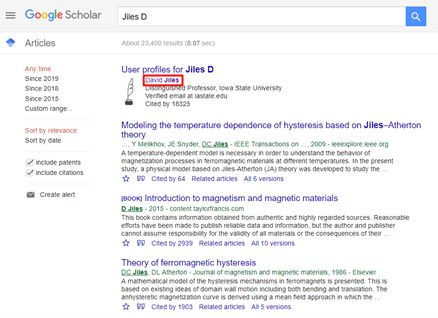What is the Hirsch index, how it is calculated and all 3 ways to determine it according to different citation bases (Scopus, Web of Science and Google Scholar)
- May 17, 2023
- Posted by: Yury Subachev, PhD
- Categories: For young scientists, Paper publication
-
Post Views: 875

When applying for an international grant, documents for participation in scientific competitions, and even when obtaining a new position or title, the selection of candidates is carried out according to a number of parameters, including the Hirsch index. A high Hirsch index is a prerequisite for participation in joint international projects, as it reflects the recognition of a scientist by the scientific community.
You might know if a scientist or a scholar has many publications in scientific journals, it’s h-index is high. However, this is not entirely true, it is not enough just to have a lot of publications in order to have a high Hirsch index.
From this article, you will learn all about the Hirsch index, the ways it is calculated and determined. At the end of the article, you will find out why Einstein’s figure is not as high as it seems to be.
The Hirsch index (h-index, h-index, or simply “Hirsch”) was proposed in 2005 by American professor Jorge Hirsch as an index to quantify the publication performance of a scientist.

The index combines both the number of articles published by a particular scientist and the number of citations of these articles, and has recently become a popular scientometric indicator. Information about it is requested and taken into account when applying for grants and awards, passing competitions for scientific positions etc.
“The higher the h-index, the more highly qualified the scientist (researcher) is considered.”
The index can also be applied to assess the activities of not only an individual scientist, but also a group of scientists (institute, university), as well as the whole country.
How is the Hirsch index calculated?
The h-index is a numerical indicator reflecting that at least h articles have been cited at least h times. This definition is easier to understand with an example.
Suppose a young Ph.D. Ivanov published 6 articles, of which the first was cited 10 times, the second one – 7 times, the third and fourth ones – twice each, the fifth one – once, and the sixth one – never yet.

The h-index of the researcher will be equal to 2, because at least 2 articles are cited at least 2 times. As soon as someone quotes Ivanov’s third or fourth article, his h-index will become equal to 3, as then 3 articles will have 3 or more mentions of them. With such a number of publications, this scientist cannot have an h-index of more than 6, and the maximum value will occur in case each of his articles is cited at least 6 times.

However, there is no need to calculate your Hirsch index manually as various scientific databases calculate it automatically based on the data they contain.
2. How to find out your Hirsch index: 3 ways.
First of all, you need to decide which database you’ll use to find out your h-index. Each database calculates the citation of each of your articles based on the lists of references of other articles that it contains. This also means that this indicator varies in different databases for the same scientist.
The most common and generally recognized are Web of Science (WoS) and Scopus.
2.1. Calculating h-index in Scopus (scopus.com)
To calculate your index in Scopus, you must do the following:
1. Go to scopus.com.
2. Select “Search for authors” at the top right of the page (this can be done without registration).
3. Enter the last name and first name of the author in the appropriate fields and click “Search”. Please note that in the Scopus database, dots must be placed after the first and middle name.

4. A list of all authors with this surname and initials appear (910 people), but it is easy to select the right one (in this case, the first one) by organization.

5. Click on the name of a suitable author and go to his/her profile, where the h-index is visible.
2.2. Definition of Hirsch index by Web of Science (webofknowledge.com)

To determine the Hirsch index for Web of Science, you must do the following:
1. Go to webofknowledge.com (only registered users can search).
2. In the search field that appears, write all possible names of the author’s surname and initials in Latin characters. All possible spellings of the author’s full name can be added with the “+ Add name variant” button.

3. Press the “Search” button.
The Web of Science database shows the articles of all authors with a given surname and initials, allowing you to go to the profile of a particular author and get acquainted with his indicators and Hirsch index.
In this way, you can also determine your own Hirsch index, because you yourself probably know which articles were written by you, and not by namesakes.
2.3. Finding your H-index in Google Scholar (scholar.google.ru)

If the author has not set a profile in Google Scholar by his/her own, then it is not possible to find out his/her Hirsch index. If the author has a profile, then we will see the indicators, and for this you need to do the following:
1. Go to scholar.google.ru.
2. Enter the last name and initials (in Russian or English?) in the search bar and click “Search”. If you don’t have your own profile yet, you can create one using the “My profile” link.

The search displays a list of all found jobs. The names of the authors registered in the system are in the form of links. Clicking on them you can immediately go to the author’s profile. If, as in our case, there is no link, then this author is not registered in the system.

For example, let’s open the profile of registered author Professor Jiles David from the University of Iowa:

4. This is how the profile of a registered author looks like:

In the profile you can see the h-index for the entire period and for the last 5 years. Google Scholar also shows the value of the i10 index, which is the number of the most popular publications that have been cited at least 10 times.
3. What is the basis for calculating your Hirsch index? Comparison of citation rates for different databases.
We have analyzed 3 citation bases by which the Hirsch index is determined. So, which of them should be used to calculate your Hirsch index? There is no single answer to this question, since these bases are different and have their own advantages and disadvantages.
The Scopus database contains a lot of data that is processed and taken into account when calculating the h-index. However, there is a peculiarity – if the database includes articles in which the author’s full name was written differently (for example, Smith J.L., Smith J., Smith John and the author himself did not combine them in the profile), the h-index data can be shown separately for each option writing the name of the author.
The Web of Science database can be accessed to this database only from computers of organizations. When registered, the user can get remote access using a login and password outside the organization. Since the Hirsch index for Web of Science is calculated only on the basis of search results, and the search itself is associated with some difficulties and peculiarities when searching for transliterated foreign surnames, the Hirsch index may turn out to be incorrect due to the omission of some articles.
The Google Scholar database is an open system, the author’s profile displays the h-index, which is calculated from all open sources, and not just within one database. A significant drawback is that Google Scholar does not contain data on articles from closed databases, such as Web of Science.
In this way, you can evaluate your Hirsch index in different databases and compare it with other scientists. These indicators are important to know and periodically check, since they are often used to assess the publication activity of a scientist, they may be asked to indicate when participating in scientific competitions, grants, as well as when applying for a new position at the university. The Hirsch index is most often used in Scopus.
4. Why is the Hirsch index an ambiguous indicator? Features and disadvantages of the Hirsch index.
Despite the widespread use of the h-index as an indicator of scientific activity, we have to admit that this indicator is very ambiguous. When comparing the indicators of scientists, one should take into account a number of features associated with publication activity and the culture of citation in different fields of science. So, for example, the Hirsch index is an adequate assessment only when comparing scientists working in the same field of science, since citation, say, in biology and medicine is much higher than in physics and mathematics. There is a lot of criticism regarding the Hirsch index, in particular, some mathematicians do not recognize this indicator as an indicator at all.
Albert Einstein has an H-index of 40. That is, judging only by the numbers, many scientists overtake Einstein in these indicators. From this it is clear that this technique in itself is incorrect, although it is still widely used. Why is the h-index of the most famous physicist so low?! The low value of the indicator may indicate that the ideas presented by the scientist are ahead of the current stage in the development of science and technology. That is, the indicator does not take into account the significance of research and its breakthrough ability.
Young scientists also cannot have a high citation rate just because of their short scientific career, and it is for them that quantitative indicators are primarily important for career advancement and for funding their research. The short career of a scientist also leads to an underestimation of the significance of his scientific work.
Conversely, a scientist whose work is often mentioned in a negative way, when critically evaluating his research, may have an unreasonably high indicator.
Conclusion
Now you and your colleagues are aware of what the “Hirsch Index” is and how it is determined. You are able to determine it in four ways.
Remember that the h-index mostly reflects the degree of the author’s popularity and his/her works in the scientific community, but does not directly reflect the significance and relevance of the scientist’s overall body of work. Obviously, it is not worth using this indicator as the only criterion for the scientific value of a researcher’s work. It can be used in conjunction with other indicators, while taking into account all its shortcomings.
How useful was this post?
Click on a star to rate it!
Average rating 5 / 5. Vote count: 2
No votes so far! Be the first to rate this post.

